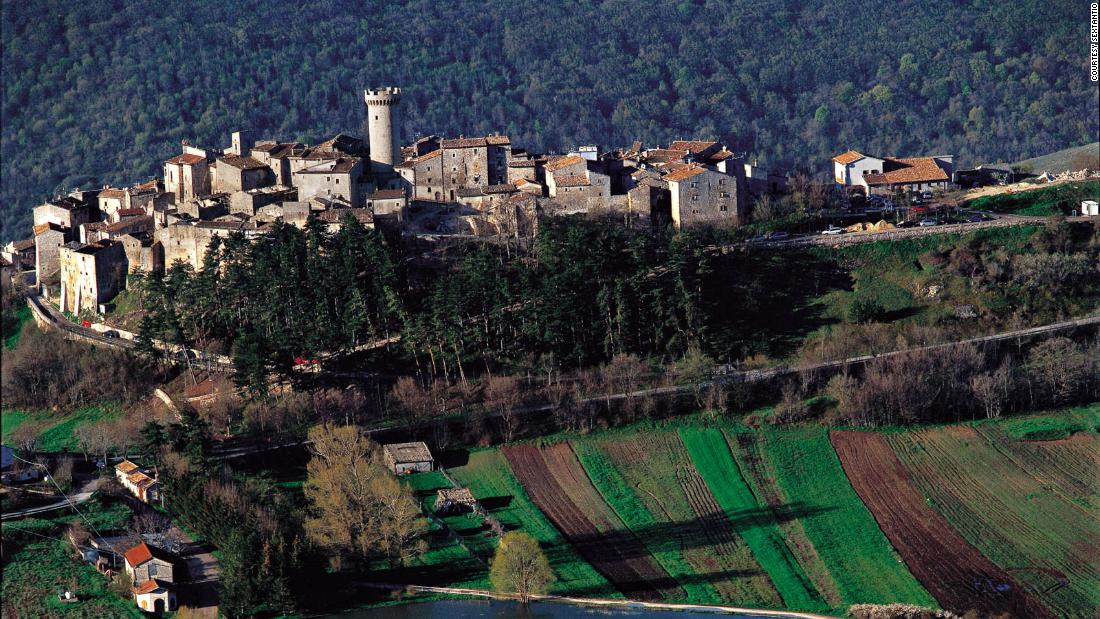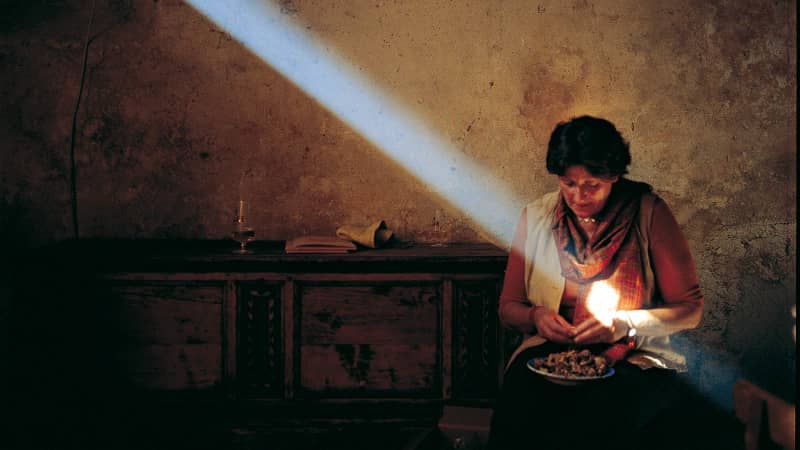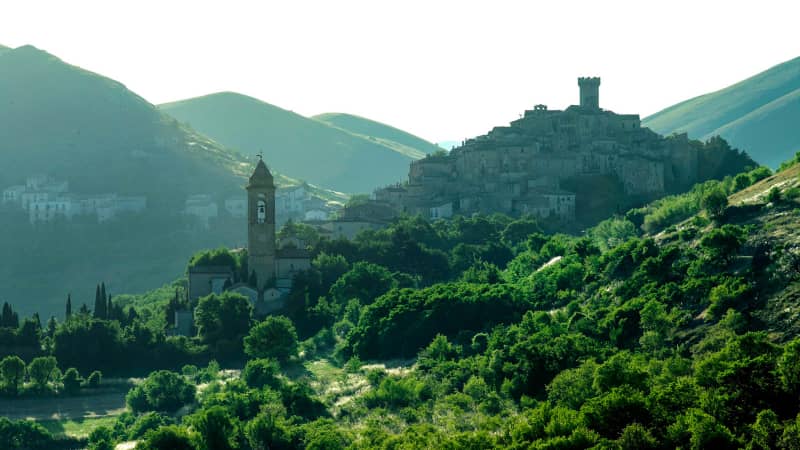Rome (CNN) — Medieval architects, deserted towns and remote countryside — what sounds like the ingredients for a horror movie could actually be the recipe for the perfect Covid-era hotel.
Since the 1990s, Italy has been pioneering a tourism model known as “albergo diffuso” — or scattered hotel. These involve installing a full hotel into various buildings of a largely abandoned village.
Most of these centuries-old villages have suffered from depopulation as residents move to bigger cities in search of work — the same problem that has inspired many Italian villages to sell off homes for next to nothing.
Enterprising hoteliers have taken these ghost towns and transformed them into often luxurious accommodations, with guests able to stay in their own individual building, but then eat at a restaurant or maybe visit a spa installed in another part of the village.
As travel begins to return with the prospect of a vaccine, it’s likely that many tourists will still favor accommodation that offers the prospect of social distancing — which is where scattered hotels come into their own.
The perfect spot

Entrepreneur Daniele Kihlgren stumbled across Santo Stefano di Sessanio in the 1990s.
Courtesy Sextantio
Back in the 1990s, entrepreneur Daniele Kihlgren stumbled across the medieval fortress town of Santo Stefano di Sessanio in the central Italian region of Abruzzo, where the Campo Imperatore mountains are known as “Little Tibet” because of the views.
Kihlgren, who grew up in northern Italy, “landed almost by chance” in the village. “I had gotten lost on the dirt roads that snake around a medieval castle,” he says.
“I had spent years searching for places like these, where the landscape had not been corrupted.”
Having found the perfect spot, he then began work on his vision.
“I met with my accountant and explained to him the potential in this village,” he says. “I told him how paradoxically it had been saved by it being abandoned. How dramatic migration had bled Southern Italy dry. I explained how I imagined a possible repurposing of these intense and desolate lands.”
Space and distance
In Santo Stefano di Sessanio, a village seemingly frozen in time, Sextantio offers picnics on top of the mountain with local breads, cheeses, wines, fruits and cured meats. The village itself still resembles a traditional setting, with a cafe in a square, locals making artisanal products, and a waiter who, upon serving local delicacies, explains how he produces them.
Other albergo diffuso have followed the same model. There are now 150 scattered hotels opening up across Italy.
In the wake of the pandemic’s devastating impact on Italy’s tourism economy — which represents 13% of the country’s GDP — these are likely to play a vital role in helping revive the sector, with more traditional hotels still facing challenges in adapting to the Covid era.
Nunzia Taraschi, director of Sextantio Albergo Diffuso, says that they “haven’t changed anything during Covid.”
“Since this concept is not very commercial, we don’t have many rooms. The rooms which are inside the small homes are distanced. This is a project born as a restoration more than an economic model; now this is an advantage because there is a lot of space and distance.”
The albergo diffuso model’s ability to meet the needs of Covid-era tourists without the need for significant changes was recently highlighted in a paper published by the Canadian Center of Science and Education by Antonietta Cosentino of the Sapienza University of Rome and Barbara Iannone of the G. D’Annunzio University of Chieti-Pescara.
Earlier this month, Abruzzo was officially labeled a Covid “red zone,” meaning tourists are prohibited from entering the region. Taraschi says the hotel was hosting guests up until the new restrictions were imposed.
“We already have requests for rooms in December,” she says. “We had clients that just weeks ago were staying at Sextantio and said they felt safer here than back home in the city.”
Fresh attractions
Marisa Ragi, owner of the Al Vecchio Convento Albergo Diffuso in the small village of Portico di Romagna in northern Italy’s Emilia Romagna region, is upbeat when explaining the current state of her business.
“Now we are desperate because Emilia is an orange zone, so we are closed,” she says. “But up until then, we were working a lot.
“I was happily surprised because, typically, 90% of our clientele are foreigners who are looking for these hidden experiences, they look for the real Italy. From mid-July when Italy opened up again until now, we had many Italians who saved us.”
Ragi adds: “We had guests until just last week when we were forced to close. We worked more these past two months than we had in the past 20 years.”
The majority of Ragi’s clients are northern European. “Italians usually ask if we have a pool or a sauna — and we don’t, we just have the fresh river in front of the albergo diffuso — but now those are high-risk things. Now having access to a fresh river isn’t a negative, it’s a positive.”
Ragi and her husband opened a restaurant in her hometown, but it was in 2007 when they opened the albergo diffuso with the help of the creator of the scattered hotel concept, Giancarlo Dall’Ara, that business was elevated to the next step.
As the community thrived, other businesses opened up in the town, inspired by the success of the albergo diffuso.
Ragi says “As a gift to the town, I decided to open a little free library that I open early in the morning and if I remember, close it at night. Everyone can come bring a book and take a book, as many as they want. I pay for the electricity. Today there are 10,000 books in the free library.”
Andrea Ciarroca, owner of the Residence Il Palazzo, also in Santo Stefano di Sessanio, says that her establishment managed to buck the downward trend seen by traditional hotels during this year’s peak season.
And, he says, the future remains bright.
“This summer we had a growth of tourism, I think there will be a niche that wants to return to nature, walk through the villages and the mountains.”
This story has been updated to include the names of the authors of an academic article cited in the text.


